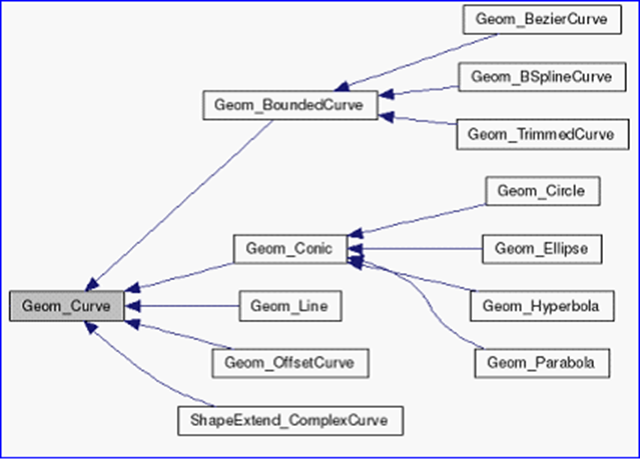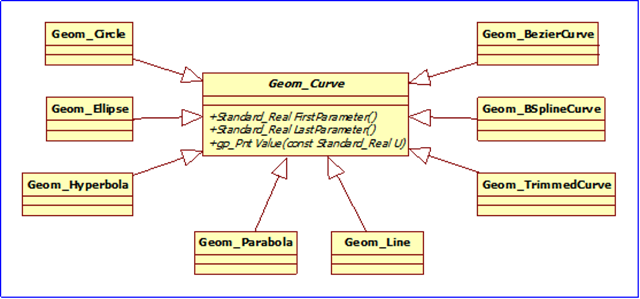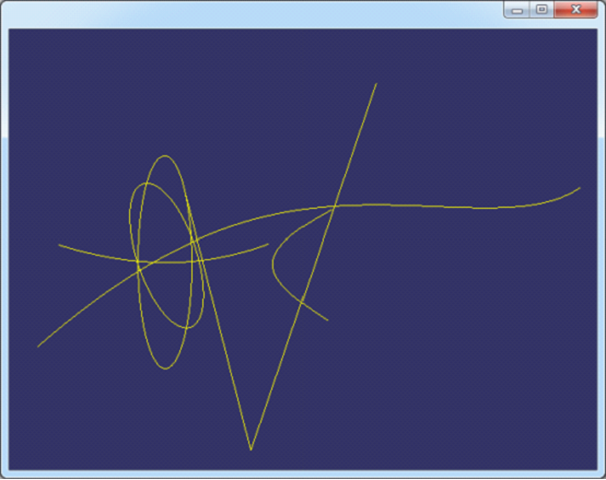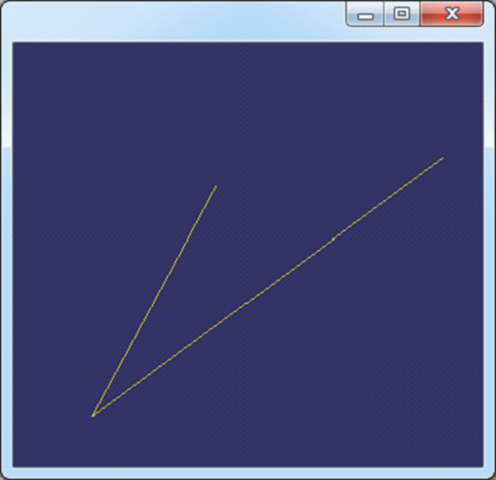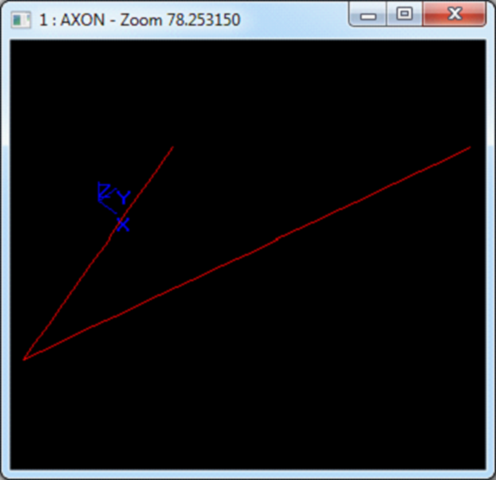在OpenSceneGraph中绘制OpenCascade的曲线
Render OpenCascade Geometry Curves in OpenSceneGraph
摘要Abstract:本文简要说明OpenCascade中几何曲线的数据,并将这些几何曲线在OpenSceneGraph中绘制出来。
关键字KeyWords:OpenCascade、Geometry Curve、OpenSceneGraph、B-Spline、NURBS
一、引言 Introduction
结合《BRep Format Description White Paper》对OpenCascade中的几何数据结构有详细的介绍。OpenCascade中BRep格式中的曲线总共分为九种,不过有二维三维之分:
1.直线 Line
2.圆 Circle
3.椭圆 Ellipse
4.抛物线 Parabola
5.双曲线 Hyperbola
6.Bezier曲线 Bezier Curve
7.B-Spline曲线 B-Spline Curve
8.裁剪曲线 Trimmed Curve
9.偏移曲线 Offset Curve
曲线的几何数据都有一个抽象基类Geom_Curve,类图如下所示:
Figure 1.1 Geometry curve class diagram
抽象基类Geom_Curve有几个纯虚函数FirstParameter()、LastParameter()、Value(),根据这几个虚函数,就可以计算曲线上对应参数U的值。类图如下图所示:
Figure 1.2 Geom_Curve Inherited class diagram
每种曲线都对那些纯虚函数进行实现,使计算曲线上点的方式统一。
二、程序示例 Code Example
根据抽象基类Geom_Curve的几个纯虚函数:
1.FirstParameter();
2.LastParameter();
3.Value(u);
利用多态可将曲线上点都以统一的方式计算出来,并使用GL_LINE_STRIP绘制出来。示例程序如下所示:
/* * Copyright (c) 2013 eryar All Rights Reserved. * * File : Main.cpp * Author : eryar@163.com * Date : 2013-08-09 18:09 * Version : 1.0v * * Description : Draw OpenCascade Geometry Curves in OpenSceneGraph. * */ // OpenSceneGraph library. #include <osgDB/ReadFile> #include <osgViewer/Viewer> #include <osgViewer/ViewerEventHandlers> #include <osgGA/StateSetManipulator> #pragma comment(lib, "osgd.lib") #pragma comment(lib, "osgDbd.lib") #pragma comment(lib, "osgGAd.lib") #pragma comment(lib, "osgViewerd.lib") // OpenCascade library. #include <TColgp_Array1OfPnt.hxx> #include <TColStd_Array1OfReal.hxx> #include <TColStd_Array1OfInteger.hxx> #include <Geom_Circle.hxx> #include <Geom_Ellipse.hxx> #include <Geom_Hyperbola.hxx> #include <Geom_Parabola.hxx> #include <Geom_BezierCurve.hxx> #include <Geom_BSplineCurve.hxx> #pragma comment(lib, "TKernel.lib") #pragma comment(lib, "TKMath.lib") #pragma comment(lib, "TKG3d.lib") // Curve Segment Delta. const double CURVE_SEGMENT_DELTA = 0.01; /* * @brief Build geometry curve of OpenCascade. */ osg::Node* buildCurve(const Geom_Curve& curve) { osg::ref_ptr<osg::Geode> geode = new osg::Geode(); osg::ref_ptr<osg::Geometry> linesGeom = new osg::Geometry(); osg::ref_ptr<osg::Vec3Array> pointsVec = new osg::Vec3Array(); gp_Pnt point; double dFirst = curve.FirstParameter(); double dLast = curve.LastParameter(); Precision::IsNegativeInfinite(dFirst) ? dFirst = -1.0 : dFirst; Precision::IsInfinite(dLast) ? dLast = 1.0 : dLast; for (double u = dFirst; u <= dLast; u += CURVE_SEGMENT_DELTA) { point = curve.Value(u); pointsVec->push_back(osg::Vec3(point.X(), point.Y(), point.Z())); } // Set the colors. osg::ref_ptr<osg::Vec4Array> colors = new osg::Vec4Array; colors->push_back(osg::Vec4(1.0f, 1.0f, 0.0f, 0.0f)); linesGeom->setColorArray(colors.get()); linesGeom->setColorBinding(osg::Geometry::BIND_OVERALL); // Set the normal in the same way of color. osg::ref_ptr<osg::Vec3Array> normals = new osg::Vec3Array; normals->push_back(osg::Vec3(0.0f, -1.0f, 0.0f)); linesGeom->setNormalArray(normals.get()); linesGeom->setNormalBinding(osg::Geometry::BIND_OVERALL); // Set vertex array. linesGeom->setVertexArray(pointsVec); linesGeom->addPrimitiveSet(new osg::DrawArrays(osg::PrimitiveSet::LINE_STRIP, 0, pointsVec->size())); geode->addDrawable(linesGeom.get()); return geode.release(); } /** * @breif Build geometry curve of OpenCascade. */ osg::Node* buildScene() { osg::ref_ptr<osg::Group> root = new osg::Group(); // 1. Build circle curve. Geom_Circle circle(gp::YOZ(), 1.0); root->addChild(buildCurve(circle)); // 2. Build ellipse curve. Geom_Ellipse ellipse(gp::ZOX(), 1.0, 0.3); root->addChild(buildCurve(ellipse)); // 3. Build Hyperbola curve. Geom_Hyperbola hyperbola(gp::XOY(), 1.0, 0.6); root->addChild(buildCurve(hyperbola)); // 4. Build parabola curve. Geom_Parabola parabola(gp::ZOX(), 1.0); root->addChild(buildCurve(parabola)); // 5. Build Bezier curve. TColgp_Array1OfPnt poles(1, 4); poles.SetValue(1, gp_Pnt(-1, -1, 0)); poles.SetValue(2, gp_Pnt(1, 2, 0)); poles.SetValue(3, gp_Pnt(3, 0, 0)); poles.SetValue(4, gp_Pnt(4, 1, 0)); Geom_BezierCurve bezierCurve(poles); root->addChild(buildCurve(bezierCurve)); // 6. Build BSpline curve. TColgp_Array1OfPnt ctrlPnts(1, 3); TColStd_Array1OfReal knots(1, 5); TColStd_Array1OfInteger mults(1, 5); ctrlPnts.SetValue(1, gp_Pnt(0, 1, 0)); ctrlPnts.SetValue(2, gp_Pnt(1, -2, 0)); ctrlPnts.SetValue(3, gp_Pnt(2, 3, 0)); knots.SetValue(1, 0.0); knots.SetValue(2, 0.25); knots.SetValue(3, 0.5); knots.SetValue(4, 0.75); knots.SetValue(5, 1.0); mults.Init(1); Geom_BSplineCurve bsplineCurve(ctrlPnts, knots, mults, 1); root->addChild(buildCurve(bsplineCurve)); return root.release(); } int main(int argc, char* argv[]) { osgViewer::Viewer myViewer; myViewer.setSceneData(buildScene()); myViewer.addEventHandler(new osgGA::StateSetManipulator(myViewer.getCamera()->getOrCreateStateSet())); myViewer.addEventHandler(new osgViewer::StatsHandler); myViewer.addEventHandler(new osgViewer::WindowSizeHandler); return myViewer.run(); }
因抛物线和双曲线的FirstParameter()和LastParameter()为负无穷和正无穷,所以对其进行处理,只输出了部分曲线。
程序效果如下图所示:
Figure 2.1 OpenCascade Geometry Curves in OpenSceneGraph
三、结论 Conclusion
OpenCascade的几何数据使用还是很方便的,只要将相应的曲线构造出来之后,计算曲线上的点使用函数Value()即可,还可计算相应参数处的微分值等。
通过理解《BRep Format Description White Paper》,可将BRep文件中数据导入OpenCascade中与上面实现的程序进行对比,结果正确。如下图所示:
Figure 3.1 B-Spline in OpenSceneGraph
Figure 3.2 B-Spline in OpenCascade Draw
PDF Version: Draw OpenCascade Geometry Curves in OpenSceneGraph
